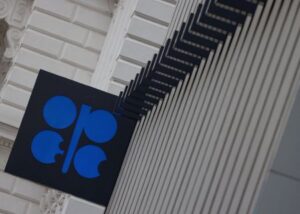(Reuters) – The personal consumption expenditures (PCE) price index rose 0.2% last month after an unrevised 0.1% gain in June, the Commerce Department said on Friday, matching economists’ forecasts.
The data looks unlikely to divert the Federal reserve, which tracks the PCE price measures as an inflation gauge for monetary policy, from lowering interest rates at least 25 basis points in September.
In the 12 months through July, the PCE price index increased 2.5%, matching June’s gain and beating the 2.6% gain expected by economists polled by Reuters. Excluding the volatile food and energy components, the PCE price index rose 0.2% last month, matching the increase in June.
MARKET REACTION:
STOCKS: U.S. stock futures were up 0.35%, spinning in a narrow range and pointing to a steady opening on Wall Street
BONDS: The U.S. Treasury 10-year yield ticked up to 4.877% and the two-year yield rose to 4.927%
FOREX: The dollar index firmed 0.15% , while the euro turned 0.09% easier
COMMENTS:
OLU SONOLA, HEAD OF US ECONOMIC RESEARCH, FITCH RATINGS
“This is a double dose of good news on inflation and economic growth. Inflation prints are slowly but surely becoming boring again as this report continues the recent streak of benign core and headline inflation prints. Consumer spending continues to surprisingly exceed all expectations, a clear indication that the economy continues to be in good shape with solid above-trend growth.
“The question now is how much of a consumer spending slowdown will we see during the remaining months of the year as the labor market continues to cool? A 25 basis point interest rate cut is pretty much set in stone in September, but the Fed will still hope the jobs report next week does nothing to pile on the pressure for a 50 basis point cut.”
BRIAN JACOBSEN, CHIEF ECONOMIST, ANNEX WEALTH MANAGEMENT, MENOMONEE FALLS, WISCONSIN
“Income and spending were a little better than expected while inflation was inline with expectations. This can reinforce the idea that the Fed has stuck the landing. However, as Yogi Berra said, ‘It ain’t over until it’s over.’ This is July data and the Fed still hasn’t cut rates. We could see some downward pressure on growth initially as savers lose a little interest income and borrowers wait a while to refinance until rate cuts become more meaningful. Why refinance after a 25 bps cut when you can wait six months for a full percentage point reduction in rates? Growth tends to slow before it reaccelerates after a cut.”
SAM STOVALL, CHIEF INVESTMENT STRATEGIST, CFRA RESEARCH, ALLENTOWN, PA
“The report was pretty much right on target as analysts had been expecting. The equity and fixed income markets have not responded. This report was a non-event. It does confirm what Fed Chair Powell said that the focus is likely to be on employment trends because the belief is that inflationary trends are likely to continue to work their way down to the 2% target.”
“Inflation is not something the Fed is worried about. The Fed, however, is going to be keeping its finger on the pulse of employment.”
CAMERON DAWSON, CHIEF INVESTMENT OFFICER, NEWEDGE WEALTH, NEW YORK
“Investors are seeing another sign of being in a soft landing – you have disinflation or at least not an acceleration of inflation, but you still have a resilient personal income, that’s growing at a healthy pace and not coming at the expense of growth.
“If you see growth remain resilient, it suggests that the Fed doesn’t have to react with urgency, but you have this distillation, which suggests that there is room for the Fed to tweak rates. It’s another one of those Goldilocks kind of reports really threading a needle right down the center. The market is really getting exactly what it wanted.
PETER CARDILLO, CHIEF MARKET ECONOMIST, SPARTAN CAPITAL SECURITIES, NEW YORK
“These are good numbers and of course they indicate that inflation has peaked and continues to move lower.”
“Personal income (growth) is not overly strong, and consumption continues to move higher, and that indicates that the prospect for recession in the first six months of 2025 is nil at best.”
“Obviously we are going to get a rate cut and I think it that whether it’s 25 or 50, that’s still debatable and that will all depend on next week’s employment data. If the data comes in much weaker than expected, let’s say there’s (payrolls) growth of fewer than 100,000 that raises the prospect prospects for a 50-basis-point rate cut, especially with inflation moving in the right direction.”
“I see three rate cuts and I see the possibility of a half a percent in September, depending on the employment data. If not, it’ll be 25-basis-point cut in September and then 50-basis-point cut in December.”
(Compiled by the Global Finance & Markets Breaking News team)





